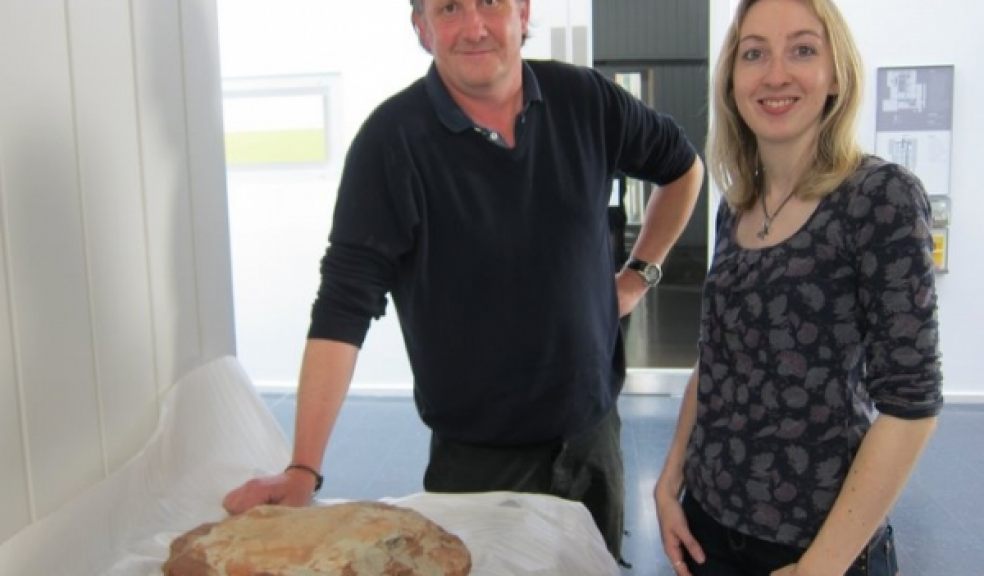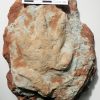
Another first for RAMM - a Cheirothere
“This species is almost certainly new to science” Palaeontologist Bob Coram
A new acquisition to the museum’s collection is a fossil footprint called a Cheirothere. It was found near Sidmouth in the Otter Sandstone (Triassic about 240 million years ago) and precedes the dinosaurs.The print and some less well preserved examples were discovered by Bob Coram of Swanage who made the donation to the RAMM.
Cheirotheres have been known from the Triassic rocks of the Midlands but this is the first recorded occurrence in the Triassic rocks of southern England.
The name Cheirothere is given to the footprint only and is known as a trace fossil; it is not the name of the family of reptile that made them. This is because there are many known footprints but no associated fossil remains of the reptile that made them.
Most recent research suggests that the Cheirothere is made by a reptile from the genus Ticinosuchus which had something of the appearance of a 3m long rather long-legged crocodile, although unrelated to them.
The curious shape of Cheirothere footprints which appear to have a large toe on the outside of the print lead the palaeontologists who first discovered them to believe that the animal walked cross-legged.
The footprint is unusual as it is preserved in relief and not as a depression. The soft red-grey mottled mudstone has been eroded away from the harder sand that filled it.
Reference: Coram, R.A., Radley, J.D., 2012. A Cheirothere footprint from the Otter sandstone Formation (Middle Triassic, late Anisian) of Devon. UK. Proceedings of the Geologists Association.


















